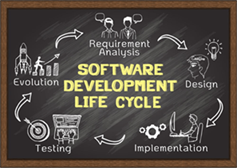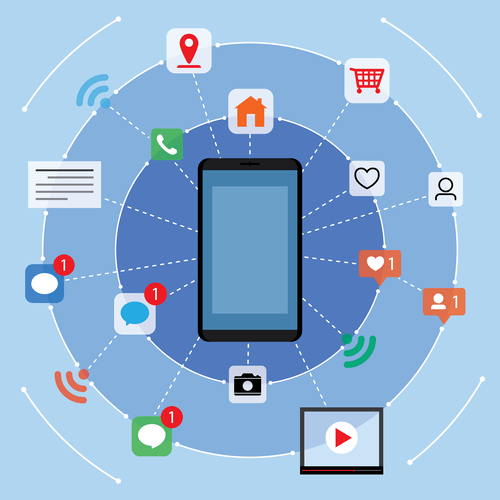Content
NVIDIA brings together NVIDIA-Certified Systems, embedded platforms, AI software and management services that allow enterprises to quickly harness the power of AI at the edge. Additionally, they came to realize that the infrastructure for transferring, storing and processing large volumes of data can be extremely expensive and difficult to manage. That may be why only a fraction of data collected from IoT devices is ever processed, in some situations as low as 25 percent. This diagram depicts where the edge is located from various vendors’ view. However, a clear distinction needs to be made between devices with computer power and edge computing serving many devices simultaneously. Analysis occurs locally, on large sets of data without incurring the latency overhead that would be experienced if this analysis needed to be done in the cloud.
- As the number of IoT devices grows and the amount of data that needs to be transferred, stored and processed increases, organizations are shifting to edge computing to alleviate the costs required to use the same data in cloud computing models.
- But as an additional revenue source, these providers could then offer public-cloud like services, such as SaaS applications or even virtual server hosting, on behalf of commercial clients.
- These shifts are in line with what has been happening in the market for several years and the evolution of the global – continuously growing – datasphere whereby more use cases demand real-time processing for an increasing percentage of data.
- Creates a flexible, scalable, secure, and more automated technology, systems, and core business process environment.
Besides, there are already many modern IoT devices that have processing power and storage available. The move to edge processing power makes it possible to utilize these devices to their fullest potential. But to do this, organizations need edge computing systems that deliver powerful, distributed compute, secure and simple remote management, and compatibility with industry-leading technologies. WIth edge computing’s powerful, quick and reliable processing power, businesses have the potential to explore new business opportunities, gain real-time insights, increase operational efficiency and to improve their user experience.
What Does It Have To Do With Privacy & Security?
An edge computing strategy enables the providers to keep the software at tens of thousands of remote locations all running consistently and with uniform security standards. Applications running close to the end user in a mobile network also reduce latency and allow providers to offer new services. In simplest terms, edge computing moves some portion of storage and compute resources out of the central data center and closer to the source of the data itself. Rather than transmitting raw data to a central data center for processing and analysis, that work is instead performed where the data is actually generated — whether that’s a retail store, a factory floor, a sprawling utility or across a smart city. Only the result of that computing work at the edge, such as real-time business insights, equipment maintenance predictions or other actionable answers, is sent back to the main data center for review and other human interactions.

This can allow raw data to be processed locally, obscuring or securing any sensitive data before sending anything to the cloud or primary data center, which can be in other jurisdictions. Network optimization.Edge computing can help optimize network performance by measuring definition edge computing performance for users across the internet and then employing analytics to determine the most reliable, low-latency network path for each user’s traffic. In effect, edge computing is used to “steer” traffic across the network for optimal time-sensitive traffic performance.
Edge Computing And The Data Center Market
The somewhat larger constrained controllers can already take over local tasks autonomously, for example in vehicles. However, because there is neither a real file system nor sufficient computing, storage or network power, these small controllers are not yet called edge computing devices. And, as said, cloud, which is complementary, is still doing very fine for a long time to come too. According SSH operations to IDC, in 2025 nearly 30 percent of data across the globe will need real-time processing with the role of edge continuing to grow. Edge and core are two essential elements here, as you’ll see below when we tackle data centers, cloud computing, and edge computing in the scope of the rapidly expanding datasphere with data and the reasons we use them for being the crux of the matter.

Manufacturing.An industrial manufacturer deployed edge computing to monitor manufacturing, enabling real-time analytics and machine learning at the edge to find production errors and improve product manufacturing quality. Edge computing supported the addition of environmental sensors throughout the manufacturing plant, providing insight into how each product component is assembled and stored — and how long the components remain in stock. The manufacturer can now make faster and more accurate business decisions regarding the factory facility and manufacturing operations. Unlike cloud computing, edge computing allows data to exist closer to the data sources through a network of edge devices. Platform providers mainly provide software and hardware infrastructure in terms of network interconnection , computing capabilities, data storage, and applications.
What Are The Benefits And Challenges Of Edge Computing?
Brown acknowledged that edge computing may attribute its history to the pioneering CDNs, such as Akamai. Ideally, perhaps after a decade or so of evolution, edge computing would bring fast services to customers as close as their nearest wireless base stations. We’d need massive fiber optic pipes to supply the necessary backhaul, but the revenue from edge computing services could conceivably fund their construction, enabling it to pay for itself. Applications may be expedited when their processors are stationed closer to where the data is collected. This is especially true for applications for logistics and large-scale manufacturing, as well as for the Internet of Things where sensors or data collecting devices are numerous and highly distributed.

If a single node goes down and is unreachable, users should still be able to access a service without interruptions. Moreover, edge computing systems must provide actions to recover from a failure and alerting the user about the incident. To this aim, each device must maintain the network topology of the entire distributed system, so that detection of errors and recovery become easily applicable. Other factors that may influence this aspect are the connection technologies in use, which may provide different levels of reliability, and the accuracy of the data produced at the edge that could be unreliable due to particular environment conditions. As an example an edge computing device, such as a voice assistant may continue to provide service to local users even during cloud service or internet outages. One definition of edge computing is any type of computer program that delivers low latency nearer to the requests.
Edge Computing Is Driving Seismic Business Change
This makes redundancy and failover management crucial for devices that process data at the edge to ensure that the data is delivered and processed correctly when a single node goes down. On one end of the spectrum, a business might want to handle much of the process on their end. This would involve selecting edge devices, probably from a hardware vendor like Dell or HPE or IBM, architecting a network that’s adequate to the needs of the use case, and buying management and analysis software capable of doing what’s necessary. That’s a lot of work and would require a considerable amount of in-house expertise on the IT side, but it could still be an attractive option for a large organization that wants a fully customized edge deployment. The hardware required for different types of deployment will differ substantially. Think about devices that monitor manufacturing equipment on a factory flooror an internet-connected video camera that sends live footage from a remote office.
At its basic level, edge computing brings computation and data storage closer to the devices where it’s being gathered, rather than relying on a central location that can be thousands of miles away. This is done so that data, especially real-time data, does not suffer latency issues that can affect an application’s performance. In addition, companies can save money by having the processing done locally, reducing the amount of data that needs to be processed in a centralized or cloud-based location. The increase of IoT devices at the edge of the network is producing a massive amount of data – storing and using all that data in cloud data centers pushes network bandwidth requirements to the limit.
Far Edge, Near Edge, Enterprise Edge, IOT Edge… with so many definitions for Edge computing infrastructure, at times novices become edgy. However, the definition of edge today is getting extended to the base stations. #EdgeComputing#Edgehttps://t.co/oHXMC9QVfc pic.twitter.com/VgGHRXaNBp
— SpeedyPanda (@SpeedyPanda3) July 21, 2021
It shields the differences in underlying hardware communication links, standardizes data conversion, and provides standard object model data, enabling cloud applications to seamlessly use edge capabilities. In 2018, less than 10 percent of enterprise data was created and processed at the edge. Analyst firm Gartner expects that by 2025, that number will reach 75 percent.1 Thus, a lot of organizations that are not using edge compute now, soon will be. These smart modems have MicroPython integration, enabling embedded developers to fully control the behaviors of their deployed devices’ edge compute functionality.
Edge Computing Definitions
Edge can be the size of sensors and controllers, a small number of network/server racks, a container full of equipment or a large air-conditioned data center. The evolution of AI, IoT and 5G will continue to catalyze the adoption of edge computing. The number of use cases and the types of workloads deployed at the edge will grow.
Edge Computing Market worth Observing Growth Atos, Aricent, AWS – Digital Journal
Edge Computing Market worth Observing Growth Atos, Aricent, AWS.
Posted: Sat, 11 Dec 2021 10:42:35 GMT [source]
All networks have a limited bandwidth, and the limits are more severe for wireless communication. This means that there is a finite limit to the amount of data — or the number of devices — that can communicate data across the network. Although it’s possible to increase network bandwidth to accommodate more devices and data, the cost can be significant, there are still finite limits and it doesn’t solve other problems. Compared with the automated I/O collection, pure IoT devices that appear are different but also overlapped.
Edge computing addresses the limitations of centralized computing by moving the processing closer to the source of data generation, “things” and users, Gartner says as mentioned in our article on edge and IoT. You immediately see some of the main benefits of edge computing for ample types of IoT applications and use cases.
We delve into what a server is, how it works, and what exciting new breakthroughs GIGABYTE has made in the field of server solutions. Do note that organizations can lose control of their data if the cloud is located in multiple locations around the world. This setup can pose a problem for certain institutions such as banks, which are required by law to store data in their home country only. Although efforts are being made to come up with a solution, cloud computing has clear disadvantages when it comes tocloud data security.

It keeps data, applications and computing power away from a centralized network or data center. Public clouds are – if used correctly – very highly available at a few points of the software stack due to redundant availability zones and persistent business data. In addition, Kubernets and Terraform help to realize multi-cloud deployments. This means that applications can be created in minutes at another provider, if an entire public cloud provider really does fail nationwide. These multi-cloud strategies currently achieve the highest availability . The Cloud Edge and also many Heavy Edge achieve at least a medium availability like classic Enterprise Computing On-Premises.
